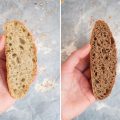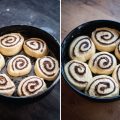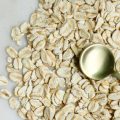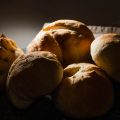I’ve been dreaming about babka for a long time. So today I would like to share the recipe for sourdough chocolate babka. I will talk about how to make the most yummy sourdough babka with chocolate.
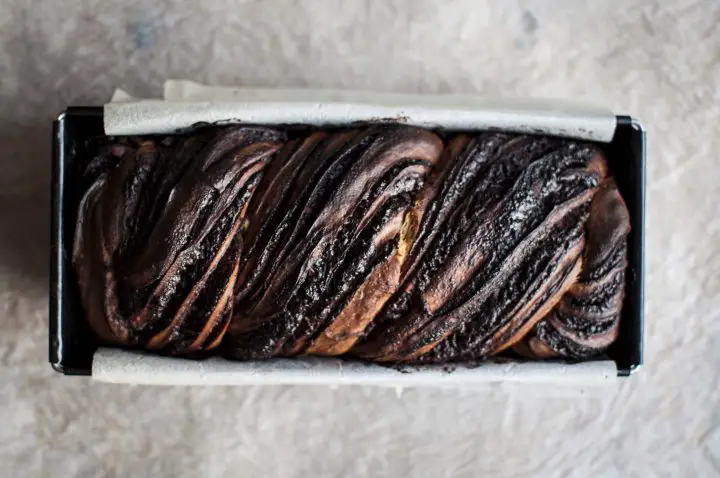
Table of Contents
Print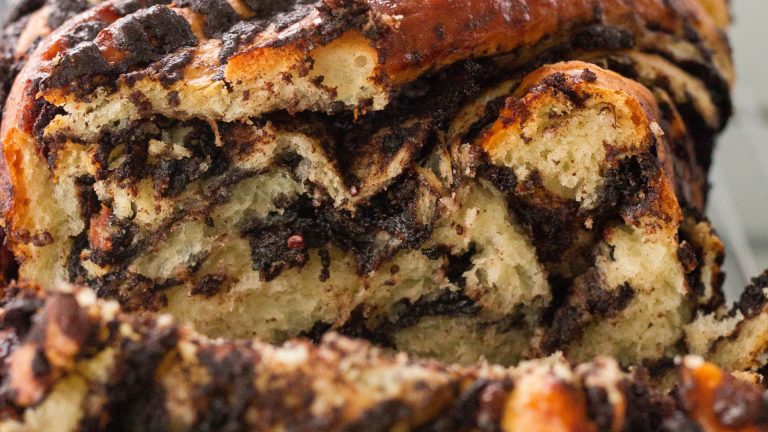
Sourdough Babka Recipe
- Total Time: 22 hrs 39 mins
- Yield: 2 medium-sized babkas 1x
Ingredients
Starter
- 80 g white wheat flour (bread flour)
- 20 g brown sugar
- 25 g active mother sourdough starter
- 35 g water
Dough
- 350 g white wheat flour (bread flour) (100%)
- all of the above starter (appr. 160g) (42%)
- 2 eggs (appr. 100 g) (28%)
- 50 g brown sugar (12%)
- 85 g unsalted softened butter (24%)
- 7 g salt (2%)
- 110 g milk (31%)
Chocolate Filling
- 130 g melted dark chocolate (I used 70%)
- 120 g melted butter
- 10 g cocoa powder
- 10 g powdered brown sugar
- 50 g roughly chopped chocolate or chocolate chips (optional)
Instructions
- In the morning, prepare your sourdough starter. The starter will be stiff, more like a dough. Leave it to ferment until doubled in volume. This may take from 4-12 hours, depending on the environment temperature and strength of your mother starter. If your starter doubles very fast but you are not ready to make the dough, put the jar in the fridge.
- In the late afternoon mix the dough. I used mixer to knead the dough. In a large mixing bowl put milk, starter, sugar, eggs, flour and salt. Mix everything together. If the dough feels dry, don’t be tempted to add too much of additional liquid – mixing in the butter in the following phase will soften the dough (experiment with the softness of the dough) – but do add the liquid if you can’t incorporate all the flour. Knead the dough for 3-4 minutes and then leave it to rest for 15-20 minutes.
- Next, knead in half of the butter quantity. Once completely integrated, add and knead in the other half. Knead the dough for 8-10 minutes (it is advisable to use mixer) until smooth and elastic – check how transparent can the dough be if you stretch it. If you feel the gluten is not developing well, leave the dough to rest for 15 minutes and you will be able to notice the change. Shape the dough into ball and place it into clean bowl. Cover with plastic wrap and leave to ferment at the room temperature for 2 hours, then put the bowl into the fridge overnight.
- In the morning, first prepare the filling. Mix together melted chocolate and melted butter, cocoa powder and powdered sugar. The batter will be runny. Put the filling to a fridge for at least half an hour or until the batter starts to thicken up and feel spreadable (like Nutella for example).
- Also, prepare two tins and line them with parchement paper. I used one 25 cm (9.8 in) long and other 18 cm (7 in) long.
- When the filling is ready, take the dough out of the fridge and place it on slighlty floured surface. Roll the dough into sqaure measuring approximately 45×45 cm (appr.18×18 in) and to be 4-5 mm thick. When done, spread the filling across the dough, leaving 1-1.5 cm (half inch) edge. If you want, sprinkle some roughly chopped chocolate or chocolate chips across the dough. Tightly roll the dough into log. Trim the ends if necessary.
- Next, take a sharp knife and cut the log in half lengthwise all the way through – see the photo below. To shape the babka, take one half and place it over the other and than simply braid these two halves. Cut the braided dough to fit your tins.
- Leave the babkas to rise until approximately doubled in volume. Final rise may take 4-7 hours, it’s temperature depending. My needed 5 hours. When the babkas are almost risen, preheat the oven to 220°C/428°F. Put in the oven and bake for 10 minutes at 220°C/428°F, then decrease to 200°C/392°C and bake for another 30-40 minutes or until nicely baked.
- When baked, take the babkas from the tins and leave them to cool on a cooling rack. If eaten fresh, the babka will literally melt in your mouth, it’s so soft.
Notes
- The dough for the babka was mixed in the late afternoon, left to rise for 2 hours at room temperature, put in the fridge overnight, shaped in the morning, left to rise for couple of hours and baked in the afternoon of that day.
- Baker’s percentages are put in brackets if you would like to scale up or down the formula.
- Please feel free to add more liquid (steps of 10 g), if you feel the dough is too stiff and all the flour is difficult to incorporate. Don’t be tempted to add a lot of liquid as you add butter in the second stage of dough mixing which softens the dough.
- Prep Time: 21 hrs 49 mins
- Cook Time: 50 mins
- Category: dessert
I just realized I’ve only been posting sweet breads lately, but today I will talk about how to make the most yummy sourdough babka with chocolate.
It must be I’m compensating for something I’m missing in my life or just pure challenge and yumminess of the sweet dough. Whenever I can, I dream about soft, buttery dough and melting rich dark chocolate between shreadable layers.
I’ve been dreaming about babka for a long time. And I’ve tried my luck couple of times, but I wasn’t quite happy with the result. It was either too dry, to hard or not sweet.
Last week I was really amazed by all of your comments, kind words and your ideas on what you would like to try and bake in my last post. Some of you wrote you would like to bake babka. I was intrigued!
I tried it again this weekend and it came out perfectly. So today I would like to share the recipe for sourdough chocolate babka. The secret here is that I used very soft brioche dough that I also used for sourdough hot cross buns. What I find important is that one type of dough can be used for so many purposes. If you find one that works, stick to it 🙂
Hop on this sourdough babka trip with me! Only sweet, delicious, chocolaty and buttery things ahead.
Sourdough Babka with Chocolate
Yields: 2 medium-sized babkas
The dough for the babka was mixed in the late afternoon, left to rise for 2 hours at room temperature, put in the fridge overnight, shaped in the morning, left to rise for couple of hours and baked in the afternoon of that day.
Ingredients for the Sourdough Babka
Note: Baker’s percentages are put in brackets if you would like to scale up or down the formula.
Needed for the Sourdough Starter
- 80 g white wheat flour (bread flour)
- 20 g brown sugar
- 25 g active mother sourdough starter
- 35 g water
Needed for the Dough
- 350 g white wheat flour (bread flour) (100%)
- all of the above starter (appr. 160g) (42%)
- 2 eggs (appr. 100 g) (28%)
- 50 g brown sugar (12%)
- 85 g unsalted softened butter (24%)
- 7 g salt (2%)
- 110 g milk (31%) *
*Please feel free to add more liquid (steps of 10 g), if you feel the dough is too stiff and all the flour is difficult to incorporate. Don’t be tempted to add a lot of liquid as you add butter in the second stage of dough mixing which softens the dough.
Needed for the Chocolate filling
- 130 g melted dark chocolate (I used 70%)
- 120 g melted butter
- 10 g cocoa powder
- 10 g powdered brown sugar
- 50 g roughly chopped chocolate or chocolate chips (optional)
How to Bake the Sourdough Babka
Sourdough starter
- In the morning, prepare your sourdough starter. The starter will be stiff, more like a dough. Leave it to ferment until doubled in volume. This may take from 4-12 hours, depending on the environment temperature and strength of your mother sourdough starter.
- If your starter doubles very fast but you are not ready to make the dough, put the jar in the fridge.
Dough
- In the late afternoon mix the dough (I used mixer to knead the dough). In a large mixing bowl put milk, starter, sugar, eggs, flour and salt. Mix everything together. If the dough feels dry, don’t be tempted to add too much of additional liquid – mixing in the butter in the following phase will soften the dough (experiment with the softness of the dough) – but do add the liquid if you can’t incorporate all the flour. Knead the dough for 3-4 minutes and then leave it to rest for 15-20 minutes.
- Next, knead in half of the butter quantity. Once completely integrated, add and knead in the other half. Knead the dough for 8-10 minutes (it is advisable to use mixer) until smooth and elastic – check how transparent can the dough be if you stretch it. If you feel the gluten is not developing well, leave the dough to rest for 15 minutes and you will be able to notice the change. Shape the dough into ball and place it into clean bowl. Cover with plastic wrap and leave to ferment at the room temperature for 2 hours, then put the bowl into the fridge overnight.
- In the morning, first prepare the filling. Mix together melted chocolate and melted butter, cocoa powder and powdered sugar. The batter will be runny. Put the filling to a fridge for at least half an hour or until the batter starts to thicken up and feel spreadable (like Nutella for example) – see photos below.
- Also, prepare two tins and line them with parchment paper. I used one 25 cm (9.8 in) long and other 18 cm (7 in) long.
- When the filling is ready, take the babka dough out of the fridge and place it on slightly floured surface. Roll the dough into squares, measuring approximately 45×45 cm (appr.18×18 in) and to be 4-5 mm thick. When done, spread the filling across the dough, leaving 1-1.5 cm (half inch) edge. If you want, sprinkle some roughly chopped chocolate or chocolate chips across the dough. Tightly roll the dough into log. Trim the ends if necessary.
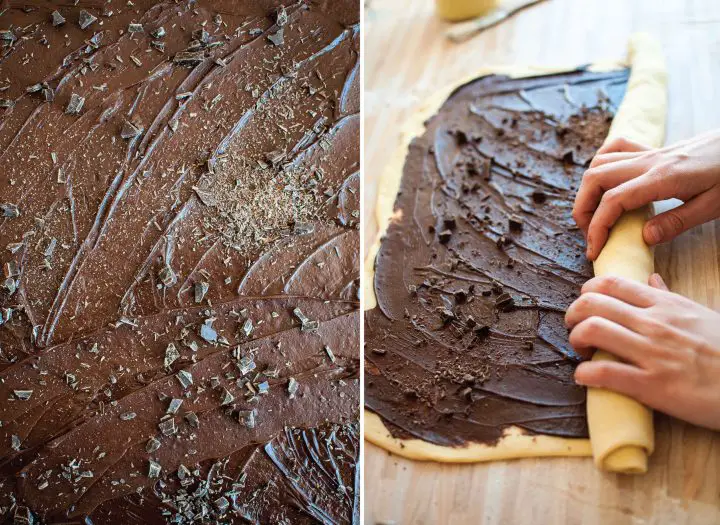
- Next, take a sharp knife and cut the log in half lengthwise all the way through – see the photo below. To shape the babka, take one half and place it over the other and than simply braid these two halves. Cut the braided babka dough to fit your tins.
- Leave the babkas to rise until approximately doubled in volume. Final rise may take 4-7 hours, it’s temperature depending. My needed 5 hours. When the babkas are almost risen, preheat the oven to 220°C/428°F. Put in the oven and bake for 10 minutes at 220°C/428°F, then decrease to 200°C/392°C and bake for another 30-40 minutes or until nicely baked.
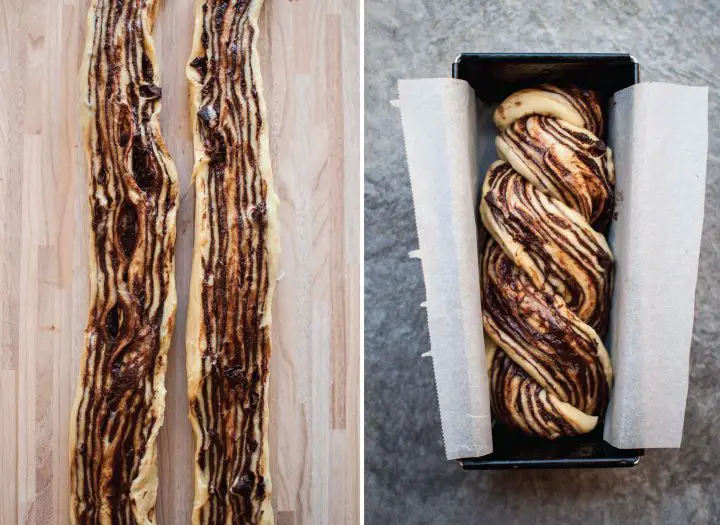
- When baked, take the babkas from the tins and leave them to cool on a cooling rack. If eaten fresh, the babka will literally melt in your mouth, it’s so soft.
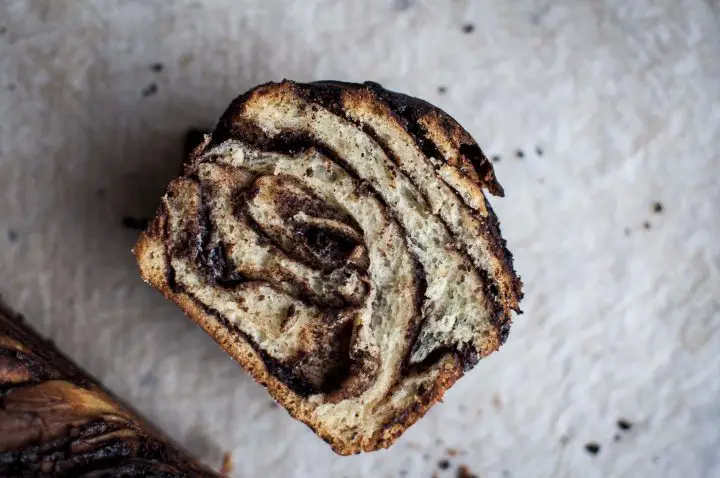
Don’t forget to share the experience if you try this sourdough babka – tag me with @yourdailysourdoughbread on Instagram or let me know in the comment below 😉
For other sweet treats, I’ve got the sourdough recipes for you:
Sourdough Babka FAQs
What is babka cake made of?
The exact ingredients and preparation method of babka may vary depending on the specific recipe, but the following are some common ingredients used to make babka cake: flour, yeast, sugar, eggs, butter, milk, salt, and filling. Once baked, babka cake is often dusted with powdered sugar or drizzled with a sweet glaze.
What makes a babka a babka?
The defining characteristic of a babka is its distinctive swirled shape, which comes from the layers of dough and filling that are twisted together. The combination of sweet yeast dough, swirled filling, twisted shape, and loaf pan baking is what makes a babka a babka.

